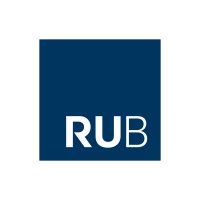Characterisation of the vibrational kinetics in nitrogen-based plasmas at atmospheric pressure is crucial for understanding the wider plasma chemistry, which is important for a variety of biomedical, agricultural and chemical processing applications. In this study, a 0-dimensional plasma chemical-kinetics model has been used to investigate vibrational kinetics in repetitively pulsed, atmospheric pressure plasmas operating in pure nitrogen, under application-relevant conditions (average plasma powers of 0.23–4.50 W, frequencies of 1–10 kHz, and peak pulse powers of 23–450 W). Simulations predict that vibrationally excited state production is dominated by electron-impact processes at lower average plasma powers. When the average plasma power increases beyond a certain limit, due to increased pulse frequency or peak pulse power, there is a switch in behaviour, and production of vibrationally excited states becomes dominated by vibrational energy transfer processes (vibration–vibration (V–V) and vibration–translation (V–T) reactions). At this point, the population of vibrational levels up to $v\,\leqslant\,40$ increases significantly, as a result of V–V reactions causing vibrational up-pumping. At average plasma powers close to where the switching behaviour occurs, there is potential to control the energy efficiency of vibrational state production, as small increases in energy deposition result in large increases in vibrational state densities. Subsequent pathways analysis reveals that energy in the vibrational states can also influence the wider reaction chemistry through vibrational–electronic (V–E) linking reactions (N + N$_2(40\,\leqslant\,v\,\leqslant\,45) \rightarrow $ N$(^2D)$ + N$_2(A)$ and N + N$_2(39\,\leqslant\,v\,\leqslant\,45) \rightarrow$ N + N$_2(a^{\prime})$), which result in increased Penning ionisation and an increased average electron density. Overall, this study investigates the potential for delineating the processes by which electronically and vibrationally excited species are produced in nitrogen plasmas. Therefore, potential routes by which nitrogen-containing plasma sources could be tailored, both in terms of chemical composition and energy efficiency, are highlighted.
| Field | Value |
|---|---|
| Publisher | |
| Authors | |
| Release Date | 2023-01-13 |
| Identifier | f33b95ac-cd92-4d72-88be-2d9baee49295 |
| Permanent Identifier (URI) | |
| Is supplementing | |
| Plasma Source Name | |
| Plasma Source Application | |
| Plasma Source Specification | |
| Language | English (United Kingdom) |
| License | |
| Plasma Medium Name | |
| Contact Name | Gibson, Andrew |
| Contact Email | |
| Public Access Level | Public |
| Funding Agency | |
| Project | |
| Subproject |


![[Open Data]](https://assets.okfn.org/images/ok_buttons/od_80x15_blue.png)